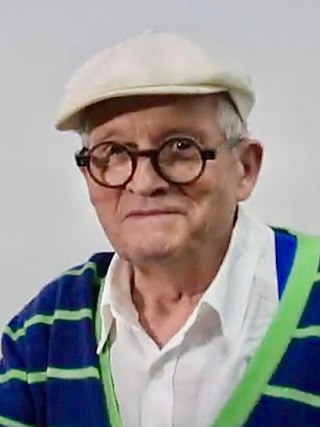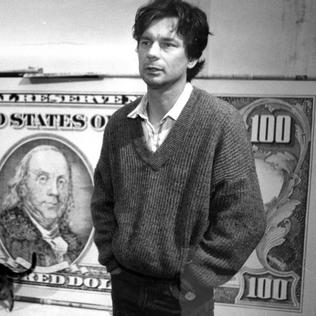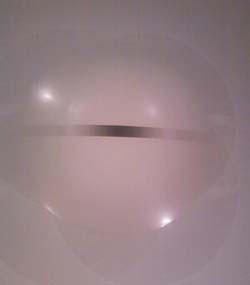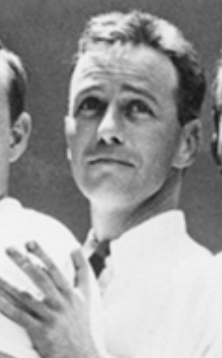
Johannes Vermeer was a Dutch painter who specialized in domestic interior scenes of middle-class life. He is considered one of the greatest painters of the Dutch Golden Age. During his lifetime, he was a moderately successful provincial genre painter, recognized in Delft and The Hague. He produced relatively few paintings, primarily earning his living as an art dealer. He was not wealthy; at his death, his wife was left in debt.

Oliver Wolf Sacks was a British neurologist, naturalist, historian of science, and writer. Born in London, Sacks received his medical degree in 1958 from The Queen's College, Oxford, before moving to the United States, where he spent most of his career. He interned at Mount Zion Hospital in San Francisco and completed his residency in neurology and neuropathology at the University of California, Los Angeles (UCLA). Later, he served as neurologist at Beth Abraham Hospital's chronic-care facility in the Bronx, where he worked with a group of survivors of the 1920s sleeping sickness encephalitis lethargica, who had been unable to move on their own for decades. His treatment of those patients became the basis of his 1973 book Awakenings, which was adapted into an Academy Award-nominated feature film, in 1990, starring Robin Williams and Robert De Niro.

David Hockney is an English painter, draughtsman, printmaker, stage designer, and photographer. As an important contributor to the pop art movement of the 1960s, he is considered one of the most influential British artists of the 20th and 21st centuries.

Joan Didion was an American writer and journalist. She is considered one of the pioneers of New Journalism, along with Gay Talese, Hunter S. Thompson, and Tom Wolfe.

Robert Walter Irwin was an American installation artist who explored perception and the conditional in art, often through site-specific, architectural interventions that alter the physical, sensory and temporal experience of space.

James Stephen George Boggs was an American artist, best known for his hand-drawn depictions of banknotes. Due to his pre-Bitcoin philosophical questions about the value of fiat currency, his early interest in creating his own currency, and his contributions to an "encrypted online currency" as early as 2000, Boggs was described by Artnet as the Patron Saint of Cryptocurrency.
New Journalism is a style of news writing and journalism, developed in the 1960s and 1970s, that uses literary techniques unconventional at the time. It is characterized by a subjective perspective, a literary style reminiscent of long-form non-fiction. Using extensive imagery, reporters interpolate subjective language within facts whilst immersing themselves in the stories as they reported and wrote them. In traditional journalism, the journalist is "invisible"; facts are meant to be reported objectively.

David Shields is an American author who has published twenty-four books, including Reality Hunger, The Thing About Life Is That One Day You'll Be Dead, Black Planet, and Other People: Takes & Mistakes. The Very Last Interview was published by New York Review Books in 2022.
Calvin Tomkins is an American author and art critic for The New Yorker magazine.
Henry Geldzahler was a Belgian-born American curator of contemporary art in the late 20th century, as well as a historian and critic of modern art. He is best known for his work at the Metropolitan Museum of Art and as New York City Commissioner of Cultural Affairs, and for his social role in the art world with a close relationship with contemporary artists.

The Hockney–Falco thesis is a controversial theory of art history, proposed by artist David Hockney in 1999 and further advanced with physicist Charles M. Falco since 2000. They argued that advances in naturalism and accuracy in the history of Western art since the early Renaissance were primarily the result of optical aids such as the camera obscura, camera lucida, and curved mirrors, rather than solely due to the development of artistic technique and skill.

The Ferus Gallery was a contemporary art gallery which operated from 1957 to 1966. In 1957, the gallery was located at 736-A North La Cienega Boulevard, Los Angeles in the U.S. state of California. In 1958, it was relocated across the street to 723 North La Cienega Boulevard where it remained until its closing in 1966.

Ginger Strand is an American author of nonfiction and fiction. Her 2005 debut novel Flight was adapted from several of her short stories. Her published books of non-fiction include Inventing Niagara: Beauty, Power, and Lies in May 2008, Killer on the Road: Violence and the American Interstate in 2012, and The Brothers Vonnegut: Science and Fiction in the House of Magic in 2015. She has published articles in The New Yorker, The New York Times,Pacific Standard,Tin House, and The Believer, among others. She was a 2009 New York Foundation for the Arts fellow in nonfiction.

Elena Herzog is a Russian-American visual artist and photographer.

Robert Irwin is associated with the Modern Art movement and is best known for his Installation art. Philosophers influence Irwin’s work, such as Maurice Merleau-Ponty’s ideas of engagement and interaction between the physical world and people. Irwin reflects these ideas through his disc installations. From 1967-1969 he worked on this installation, which consists of convex discs made of metal and plastic. The discs hang on a wall and are illuminated by floodlights to create the illusion of no edges. It is a play on light, dark, shadows, and the space in which the discs lie in.

David Foster Wallace (1962–2008) was an American author of novels, essays, and short stories. In addition to writing, Wallace was employed as a professor at Illinois State University in Normal, Illinois, and Pomona College in Claremont, California.

Yale Union was a nonprofit contemporary art center in southeast Portland, Oregon, United States. Located in the Yale Union Laundry Building built in 1908, the center was founded in 2008. In 2020, the organization announced it would transfer the rights of its building to the Native Arts and Cultures Foundation (NACF). It dissolved the nonprofit after wrapping up its program in 2021 and completing the building and land transfer. The space is now the Center for Native Arts and Cultures.

Laura J. Snyder is an American historian, philosopher, and writer. She is a Fulbright Scholar, is a Life Member of Clare Hall, Cambridge, was the first Leon Levy/Alfred P. Sloan fellow at The Leon Levy Center for Biography at The Graduate Center, CUNY, and is the recipient of an NEH Public Scholars grant. She writes narrative-driven non-fiction books including, most recently, Eye of the Beholder: Johannes Vermeer, Antoni van Leeuwenhoek, and the Reinvention of Seeing, which won the Society for the History of Technology's 2016 Sally Hacker Prize. In 2019, Snyder signed a contract with A. A. Knopf to author a biography of Oliver Sacks, based on exclusive access to the Sacks archive. Snyder also writes for The Wall Street Journal. She lives in New York City, where she was a philosophy professor at St. John's University for twenty-one years.

Johannes Vermeer was a Dutch Baroque Period painter who specialized in domestic interior scenes of middle class life. His works have been a common theme in literature and films in popular culture since the rediscovery of his works by 20th century art scholars.

Alan Lynch was an American painter associated with post-war California art.
















